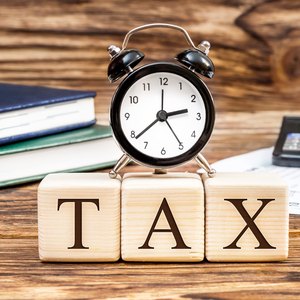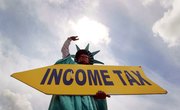
A “cafeteria” plan, or Cafe 125, allows employees to pay certain expenses with pre-tax dollars. It is known as a cafeteria plan because the menu allows for various options. There is a catch in that in return for the cafeteria plan options, the employee must agree to a certain salary reduction. On the up side, because the cafeteria plan funds are not part of the employee's salary, the IRS does not consider this money as a wage.
Understanding Section 125 Plans
Cafeteria plans are also known as Section 125 plans, referencing that section of the IRS code, hence the name Café 125. Section 125 plans are available to all employees, as well as their spouses and dependents. What you will see on your W-2 is a reduction in your gross wages because the cafeteria plan lowered your salary. For example, if you earn $50,000 a year, but you receive $4,000 per year in cafeteria benefits, you are only paying taxes on $46,000 annually.
Read More: W-2 Forms: What It Is, Who Gets One & How It Works
Finding Cafe 125 on W-2
Taxes on wages, such as withholding, Medicare and Social Security, are not charged on cafeteria plan items. For this reason, cafeteria plan benefits are not included on the W2 in box 1, which is reserved for wages. Because they are not taxed, you also won’t find the Café 125 plan included in box 3 for Social Security, or box 5 for Medicare. Neither is the Café 125 plan found in box 16 for state wages and tips.
One caveat: Although Café 125 benefits are usually not found in these boxes, it all depends on the actual benefit and the state. That’s why you may see Café 125 reported as a code on your W2, especially in box 14, which is set aside for Other. Box 14 is also used to denote educational assistance, some pension plan contributions and union dues. If you use the dependent care option for Café 125, you’ll find that information in box 10.
Read More: How to Find W2 Information
Typical Non-Taxable Benefits
Although the benefits available in a Café 125 plan vary, they are typically used to confer benefits that do not directly defer pay. Employees make the choice to receive these benefits in lieu of pay. Because you weren’t taxed on these benefits in the first place, they are not tax-deductible on your income tax form. Cafe 125 benefits include:
- qualified 401(k) retirement plans
- group term life insurance
- adoption assistance
- dependent care assistance, such as daycare
- certain health and accident insurance
- health savings accounts
- flexible spending accounts
While these are typical benefits, not all will prove non-taxable for Medicare and Social Security. For example, group life insurance premiums above $50,000 don’t trigger federal income taxes, but deductions are taken out for Medicare and Social Security. The 2020 limit on non-taxable dependent care is $5,000. If you receive benefits above that amount, the difference is taxed as wages and you will see it included in boxes 1, 3 and 5.
Read More: Should Non-Taxable Income Show on Your W-2?
Benefits Not Allowed in a Cafeteria Plan
The IRS does not permit certain types of benefits for inclusion in a Cafe 125 plan. These include:
- educational expenses
- meals
- employer-provided cellphones
- employee discounts
- moving expenses
- retirement planning
- transportation
- on-premises lodging
- athletic and exercise facilities
Note that Archer Medical Savings Accounts (MSAs) are not eligible for Cafe 125 plans. These MSAs were created to help the self-employed and small businesses with medical care costs.
References
Writer Bio
A graduate of New York University, Jane Meggitt's work has appeared in dozens of publications, including Sapling, Zack's, Financial Advisor, nj.com, LegalZoom and The Nest.

